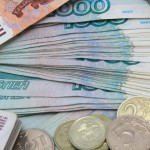Gold futures held losses after dropping to the weakest level in six weeks as further signs of recovery in the US backed the case for the Federal Reserve to keep cutting stimulus. Also fanning negative sentiment, assets in the SPDR Gold Trust, the biggest bullion-backed ETF, fell for a second day yesterday, while a stronger dollar further pressured prices.
On the Comex division of the New York Mercantile Exchange, gold futures for settlement in June traded little changed at $1 303.40 an ounce by 07:53 GMT. Prices shifted in a tight daily range between $1 307.40 an ounce and $1 302.70 an ounce. Yesterday, gold futures touched $1 299.40, the weakest level since February 13th.
Gold has fallen almost 2% since March 19, when Federal Reserve policy makers trimmed their bond-buying program by another $10 billion to $55 billion per month and Fed Chair Janet Yellen said that the first increase in borrowing costs should come “around six months” after the end of the stimulus program. The monetary easing program is expected to be brought to an end this fall.
While gold is still 8.2% higher this year as turmoil over Ukraine left Russia and the West involved in their worst conflict since the end of the Cold War, Goldman Sachs Group Inc. forecast further declines, with prices likely to reach $1 000 an ounce for the first time since 2009, as the US economy rebounds.
“The main driver of gold at the moment fundamentally is the fact the U.S. interest rates are pushing higher,” said Steven Dooley, head of research at Forex Capital Trading Pty in Melbourne, cited by Bloomberg. “There’s no real reports of physical buying.”
Fed stimulus outlook
Bullion prices were pressured yesterday after it became clear that US durable goods orders rose more-than-expected in February.
Durable goods orders rose 2.2% in February, sharply exceeding analysts’ expectations of a 0.8% increase and following a 1.3% drop in the previous month, data by the US Commerce Department showed today. The increase was mainly driven by orders for motor vehicles and parts, which jumped 3.6 percent last month, the biggest gain since February last year, data from the report revealed.
Shipments of the core durable goods, which exclude the volatile transportation items, rose 0.2% in February, slightly below analysts’ forecasts for a 0.3% gain and after a 0.9% advance in the previous month.
Moreover, US consumer confidence rose more than expected, reaching a 6-year high in March, further backing the case for reduced stimulus.
US consumer confidence increased to 82.3 this month, the strongest since January 2008, from 78.3 in February and exceeding analysts’ forecasts for a gain to 78.6, data by the Conference Board showed on March 25th.
Also fanning negative sentiment, the US dollar index, which measures the greenback’s performance against six major trading partners, rose by 0.07% to trade at 80.23 by 07:43 GMT. The June contract rose to a session high of 80.23, while days low was touched at 80.09. The US dollar index settled last week 1% higher, after the Federal reserve cut its stimulus program. Strengthening of the greenback makes dollar-denominated commodities more expensive for foreign currency holders and limits their appeal as an alternative investment.
Assets in the SPDR Gold Trust, the biggest bullion-backed ETP, fell for a second day to 816.97 tons yesterday. Holdings in the fund are up 1% this year after it lost 41% of its assets in 2013 that wiped almost $42 billion in value. A total of 553 tons has been withdrawn last year.





